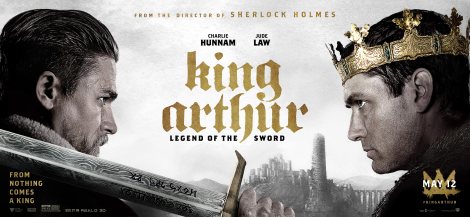So, you might choose to be transported into that unique realm where myth and history combine together. A new film, King Arthur: Legend of the Sword, from the director of Sherlock Holmes and fast-paced gangster titles comes out May. This depiction looks to feature… yep, fast-paced action scenes, street-wise characters, the magic and the swordplay. It does look to be – tougher – than previous versions, although of course the magic and myth seem there to beef up a ‘lad off the street’ story – instead of any bigger religious or chivalrous elements in the spiritual tales. A sort of reluctant, CGI-powered super-hero Arthur.
What about the real story though, and the history? The tales surely had it all without magic or Merlins. There were swords and castles, romance and a ‘people’s king’ riding out into many a battle against territorial knights, struggling to unite and restore the health of the land. All this on top of keeping a veteran order of troubled knights in line – with their unique character traits, and inner and outward religious struggles. And then there was his passionate queen. And his best friend, destined to betray him. There may not have been social media then, but it was still tough being a leader. Even better, the ‘dark ages’ (six and a half centuries of it) were so-named partly because few records survive to certify such a persona as being real or not.
The most real element would have been the issue of territory. The end of Roman rule in Britain left a big problem and the main concern in the Dark Ages; England was now vulnerable from attacks by Irish raiders from the west and Picts from the north. Later, Angles, Saxons and Jutes. The Britons did need a tough leader, even possibly ‘off the streets’ of Londinium. And in the end, a major battle in 500 sees the victory of the Britons over the Saxon advance for half a century. Quite a victory and possibly Arthur’s last, as there is no more mention of him after this. Next time it would be the Vikings to help unify the ‘English’ further.
It’s very possible there was an Excalibur of the earthly kind. But what of Camelot? Its actual location is pretty unknown and attributed to a number of possible sites, some in Wales and some in Cornwall. Most scholars see it as being entirely fictional, its geography being ideal for romance writers. Arthurian scholars have mentioned that “Camelot, located nowhere in particular, can be anywhere.”
But whatever actual history there was (and there are mentions of an Arthur and 12 battles from Scotland to the south of England) it was turned into a useful myth and then more entertaining stories. Those of a brilliant, shining leader that were needed, partly, to see through this magic ‘fog’ of the dark ages. Will we sense any of this through the magic of the film’s CGI?
Later, the courtly love poems too, such as Lancelot, le Chevalier de la Charrette, an Old French poem by Chrétien de Troyes, were thrown into the pot. In fact, many stories and poems came later, enhanced to entertain or promote patriotism or cohesion.
But the core legend of King Arthur shows a fusion of the power of religion with warrior knights in the face of a fragmented, pagan – scary – post-Roman age in Britain. Perhaps, certain countries are still looking for a little of this cohesion today.
Where will we next meet Arthur, Lancelot, Gawain and crew? Maybe in a great VR game-realm of Logres, or migrated high up into The Spiral…?
He returns in time of need.



